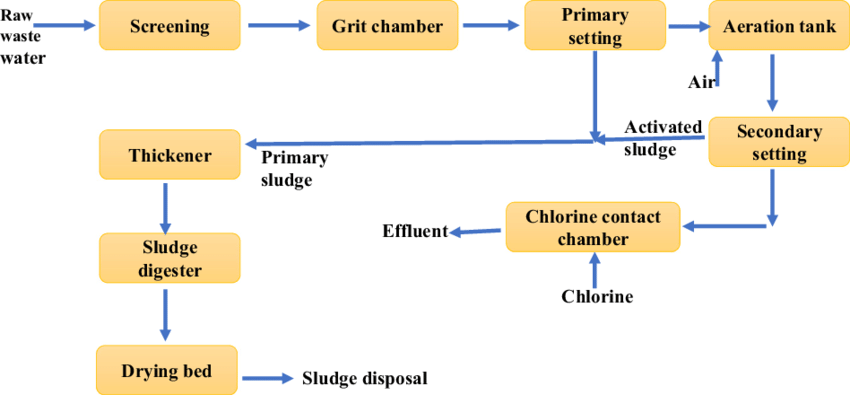Reclaim Waste - Truths
Reclaim Waste - Truths
Blog Article
The Main Principles Of Reclaim Waste
Table of ContentsLittle Known Questions About Reclaim Waste.Not known Facts About Reclaim WasteNot known Facts About Reclaim WasteThe Only Guide for Reclaim WasteThe Buzz on Reclaim Waste
Domestic sewer waste refers to the waste and items from a residential septic tank. The proper administration and disposal of domestic sewer waste require liquid waste to be transferred to a sewage treatment plant where the proper approaches and tools are applied to detoxify and dispose of waste.
Business waste often includes potential threats, such as flammable products or a combination of fluid and strong waste products, and calls for an advanced and comprehensive disposal process. The disposal of business waste typically involves the filtration of waste prior to transportation to make sure safe and proper disposal. Hazardous waste is developed from results and drainage of commercial procedures and manufacturing.
This sort of waste can not use the exact same sewer management transport or processes as septic or industrial fluids. The industrial waste administration procedure requires the inspection and screening of fluid waste prior to it goes through the disposal process (liquid waste disposal). Runoff waste is the fluid waste that originates from overflow and excess stormwater in extremely booming areas or cities
Overflow waste can trigger contamination and flooding if not managed appropriately. Making sure appropriate waste management can prevent disasters and decrease environmental damage.
What Does Reclaim Waste Do?
Contact PROS Solutions today to find out regarding our waste monitoring and disposal solutions and the proper means to take care of the fluid waste you create.
(http://peterjackson.mee.nu/do_you_ever_have_a_dream#c2256)Do you know what occurs to your water when you disengage, purge the commode or drain the cleaning machine? No? Well, it's worth understanding. This supposed 'wastewater' is not only an essential resource yet, after treatment, will certainly be launched to our land, waterways or the ocean. Used water from toilets, showers, bathrooms, kitchen sinks, laundries and industrial processes is referred to as wastewater.

water used to cool equipment or clean plant and tools). Stormwater, a form of wastewater, is overflow that streams from farming and urban locations such as roofings, parks, gardens, roads, paths and seamless gutters into stormwater drains pipes, after rain. Stormwater flows neglected straight to local creeks or rivers, at some point getting to the sea.
What Does Reclaim Waste Do?
In Queensland, a lot of wastewater is dealt with at sewage therapy plants. Wastewater is moved from domestic or industrial sites through a system of sewers and pump stations, understood as sewerage reticulation, to a sewer treatment plant.
The Department of Natural Resources suggests neighborhood governments about managing, operating and keeping sewerage systems and treatment plants. In unsewered locations, regional governments might need owners to set up specific or home sewer treatment systems to treat domestic wastewater from commodes, kitchen areas, restrooms and laundries. The Division of Natural Resources authorizes the usage of house systems when they are confirmed to be effective.
In some new communities, therapy of some stormwater to get rid of litter, sand and crushed rock has started using gross toxin catches. Wastewater treatment occurs in four phases: Gets rid of solid issue.
Utilizes tiny living microorganisms understands as micro-organisms to damage down and eliminate continuing to be liquified wastes and fine fragments. Micro-organisms and wastes are included in the sludge.
How Reclaim Waste can Save You Time, Stress, and Money.
Nutrient removal is not available at all sewer therapy plants since it requires expensive specialist tools. Clear liquid effluent generated after treatment may still have disease-causing micro-organisms - liquid waste removal.

This typically indicates wastewater needs to be dealt with or contaminants gotten rid of before it can be discharged to rivers. Most wastewater streams right into the sewerage system. Under the Act, neighborhood federal governments provide approvals and licences for ecologically appropriate activities (Periods) involving wastewater releases that may have a regional impact. The division administers authorizations and licences to ERAs involving wastewater launches that could have a regional or statewide influence.
The Main Principles Of Reclaim Waste
Or else, samples are taken for laboratory evaluation. Commonly several tests are required to establish the degrees of each of the various pollutants such as oils, heavy steels and pesticides in water. Surveillance supplies valid details concerning water top quality and can verify that permit conditions are being satisfied. The info acquired via surveillance supplies click here for info the basis for making water high quality decisions.
Report this page